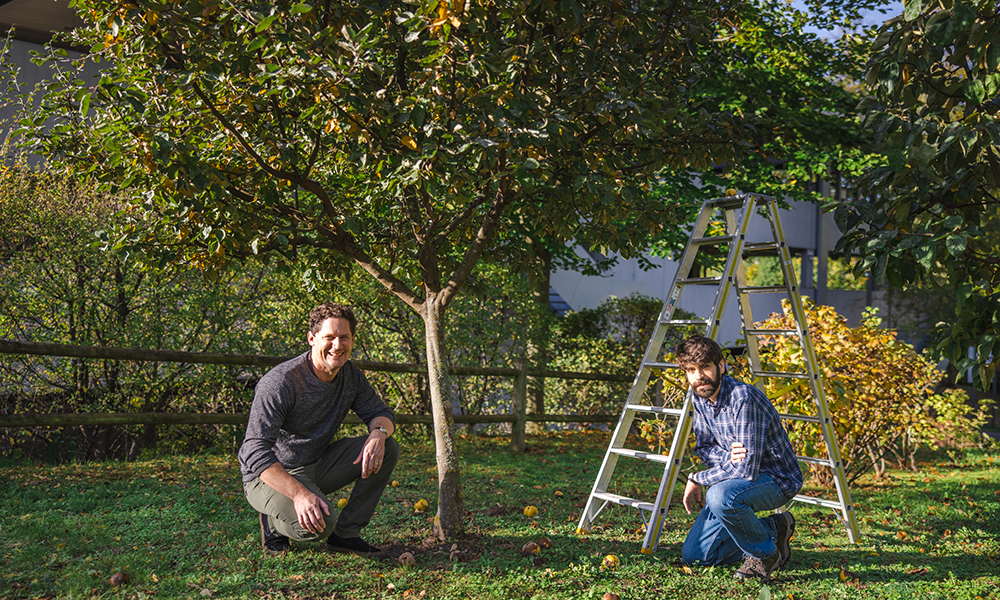
The power of a pesticide library
EMBL research groups apply molecular biology and its research tools to better understand agricultural pesticides
Issue 99
EMBL researchers conducted a pilot project in Iceland as the final preparatory step before commencing their journey traversing European coastlines
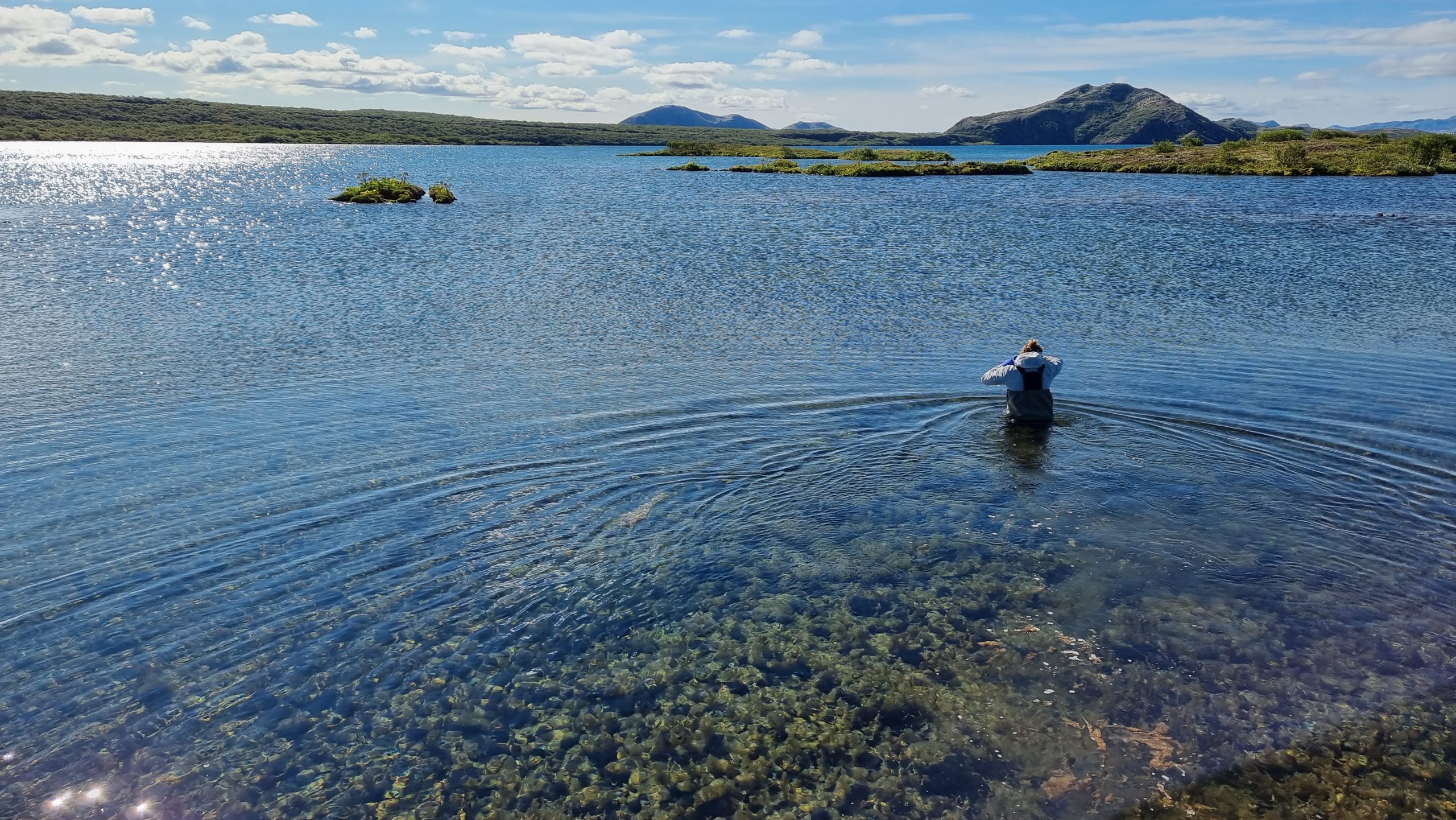
When a team of EMBL biologists decided to conduct an expedition to Iceland earlier this year to collect environmental samples from its coast, a volcano was not really in the plan. But when Fagradalsfjall, located 60 km from Reykjavik, erupted only five days before the expedition, it added a little bit of otherworldliness to a trip which had already been pushing at the boundaries of ‘traditional’ fieldwork.
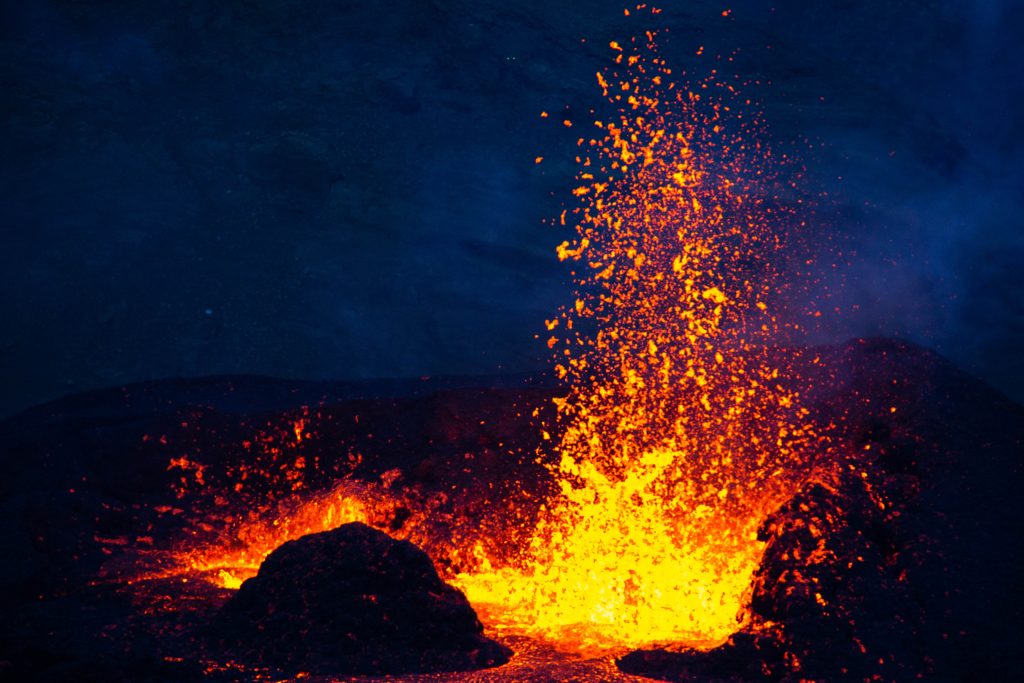
“It was absolutely breathtaking,” recalls Joanna Zukowska, a scientist in the Pepperkok team at EMBL Heidelberg. “I was speechless.”
The expedition was the final pilot for Traversing European Coastlines (TREC), a flagship project of the new EMBL programme that aims to study life in context. TREC is a way to bring together environmental research and molecular and cellular biology to address urgent societal challenges.
Over a period of three weeks in August 2022, EMBL researchers and their collaborators visited three different locations in Iceland – Reykjavik, Westfjords, and Akureyri – with unique climatic and environmental conditions. They collected marine organisms, soil, seawater, and sediments, and tested out experimental protocols that would become critical for the large-scale expedition that EMBL will run in 2023 and 2024 for the TREC project.
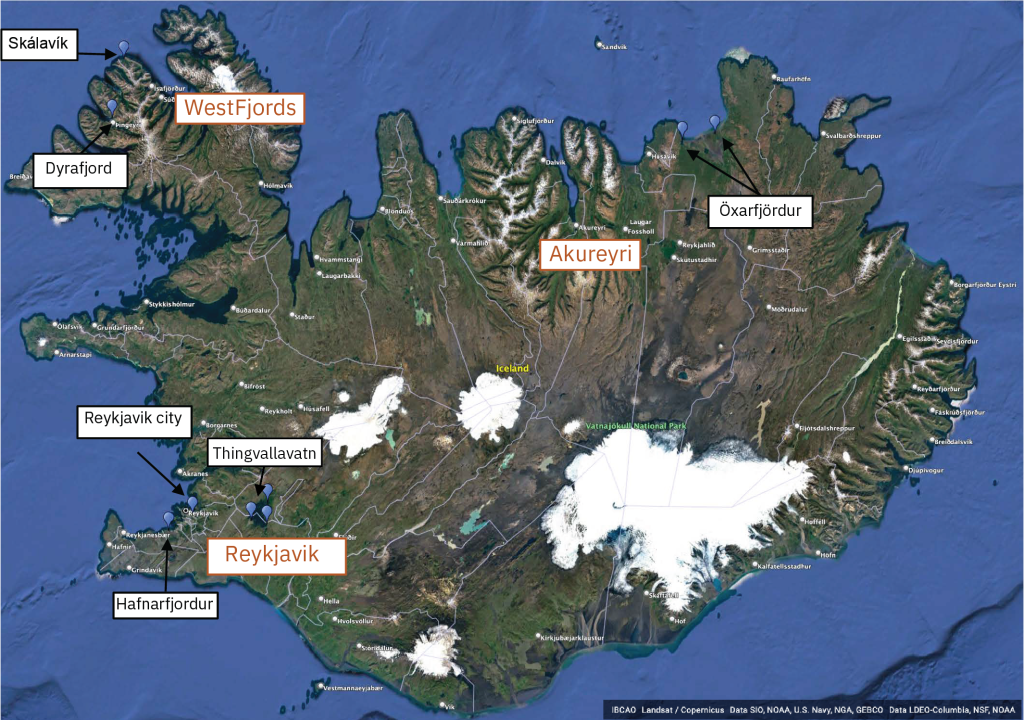
This pilot expedition was co-organised by the Icelandic biodiversity research network BIODICE. It involved collaborations with host institutions across Iceland, including the Marine and Freshwater Research Institute (MFRI) and the University of Iceland.
Reykjavik is the capital of Iceland and home to the Marine and Freshwater Research Institute (MFRI). This institute was the first stop for the EMBL researchers and their collaborators for this pilot expedition. The visit was supported by MFRI’s director Þorsteinn Sigurðsson and marine geneticist Christophe Pampoulie.
Preparations began last year when EMBL scientists visited Iceland to engage with the local scientific community, visit institutes, and check out sampling locations. This summer, the TREC team shipped scientific equipment, labware, and reagents to MFRI, a vast logistics effort coordinated by Cristian Tambley, Valerie Maier, Niko Leisch, and Paola Bertucci at EMBL.
The sample-collecting teams soon followed.
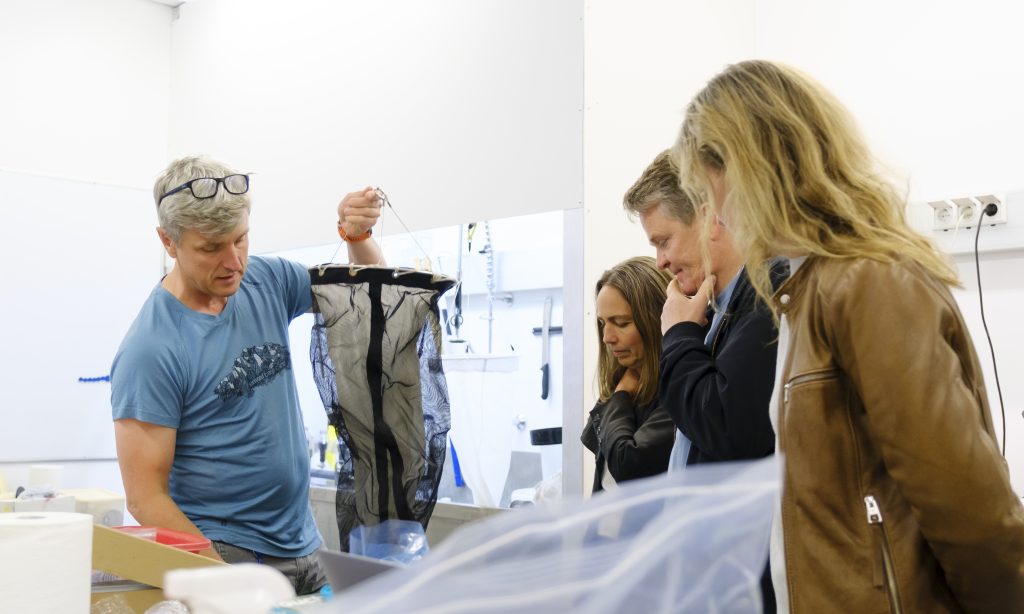
Once at the site, the teams quickly settled into a routine. Every morning began with climbing into a boat and heading out to the ocean. Once a safe distance from shore, a plankton net – a specially constructed cone-shaped net with an extremely fine mesh – was thrown overboard and dragged behind the boat for a few minutes. This allowed enough time for it to fill with tiny unicellular sea creatures called plankton, which the team then filtered and carried back to shore. Once back at MFRI’s labs, the teams went to work, studying and preserving the plankton in various ways.
“Planktons fill the oceans and seas around us and yet we know so little about them,” said Omaya Dudin, group leader at the Swiss Federal Institute of Technology Lausanne (EPFL) and one of the members of the expedition. “They’re extremely important for the oxygenation of the planet, for the food chain in the sea, and for the climate and the environment.”
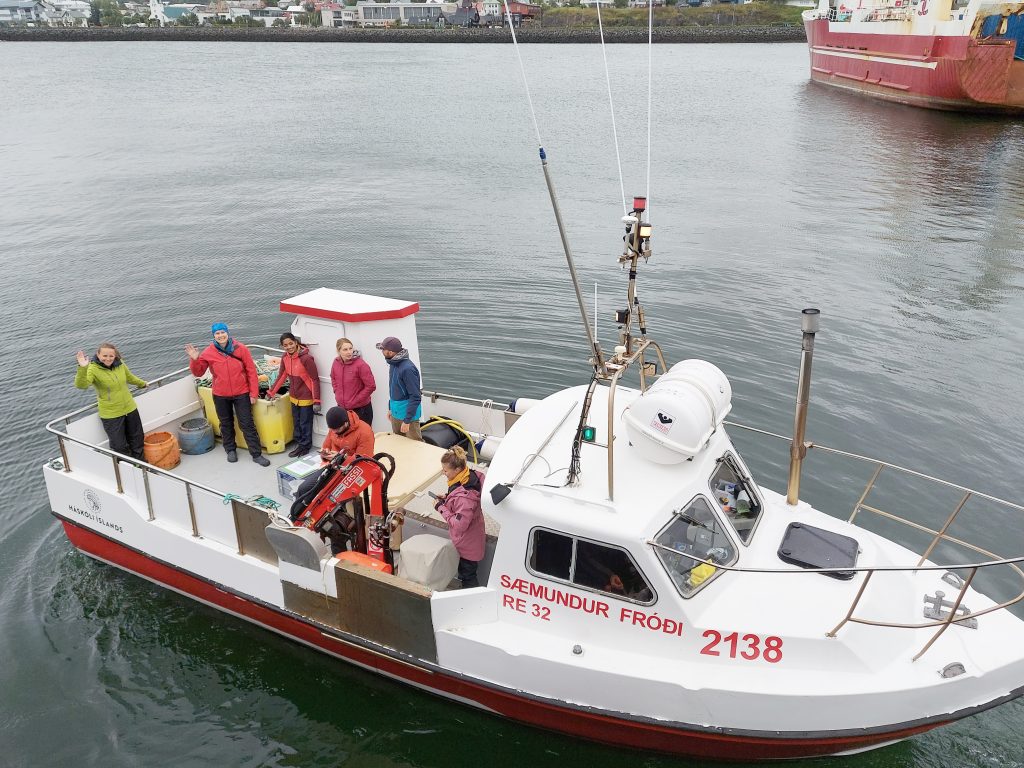
Dudin’s lab specialises in understanding the origin of animal development using expansion microscopy, a technique which they share with their collaborators – Gautam Dey, Sinem Saka, and Yannick Schwab at EMBL Heidelberg and Marine Laporte, Paul Guichard, and Virginie Hamel at the University of Geneva. When an opportunity to join the TREC expeditions came up, the ‘Expansion Team’ felt it was too good an opportunity to lose.
Expansion microscopy involves embedding biological samples in a gel matrix, and then slowly expanding the gel. The embedded cells get ‘blown up’ along with the gel, allowing scientists to glimpse details that would ordinarily have been beyond the resolution of light microscopy. It also allows better permeability for stains and antibodies, helping researchers identify structures, proteins, and molecular complexes inside the cells.
In spite of its remarkable strengths and potential, expansion microscopy is not a technique routinely tested in the field. Members of the Expansion microscopy team who travelled to Iceland worked on standardising its protocols to observe plankton samples freshly obtained from the sea.
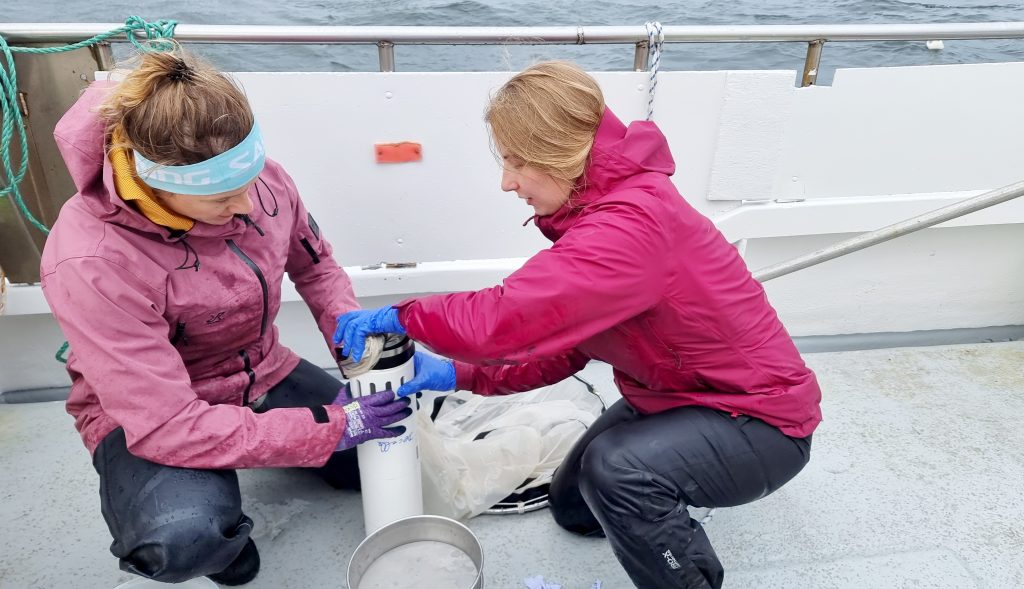
The expansion team had two goals: to create a biobank and to build an atlas of plankton images. The biobank – a catalogue of plankton species that can serve as a baseline biodiversity snapshot – would allow scientists to identify potential future changes as oceans warm over the coming years. The atlas – a collection of images grabbed by expansion microscopy of marine plankton species – would also act as an invaluable resource for future biologists.
“There are about 10 million species estimated to live on this planet. Out of these, we have only identified or characterised about two million using genomics,” said Dudin. “And out of these millions, there are only 50 model organisms from which we have learned almost all the biology that we know today.”
Characterising and measuring the biodiversity of our shallow oceans and coastal ecosystems would be the first step towards building up a complete picture of the networks that sustain life in these incredibly vulnerable environments.
Biodiversity exists at many scales, however, and not all the creatures the biologists sought at Iceland were microscopic. Leslie Pan and Emily Savage joined the expedition representing the Arendt group at EMBL Heidelberg and their interests lie in a small marine ragworm called Platynereis dumerilii.
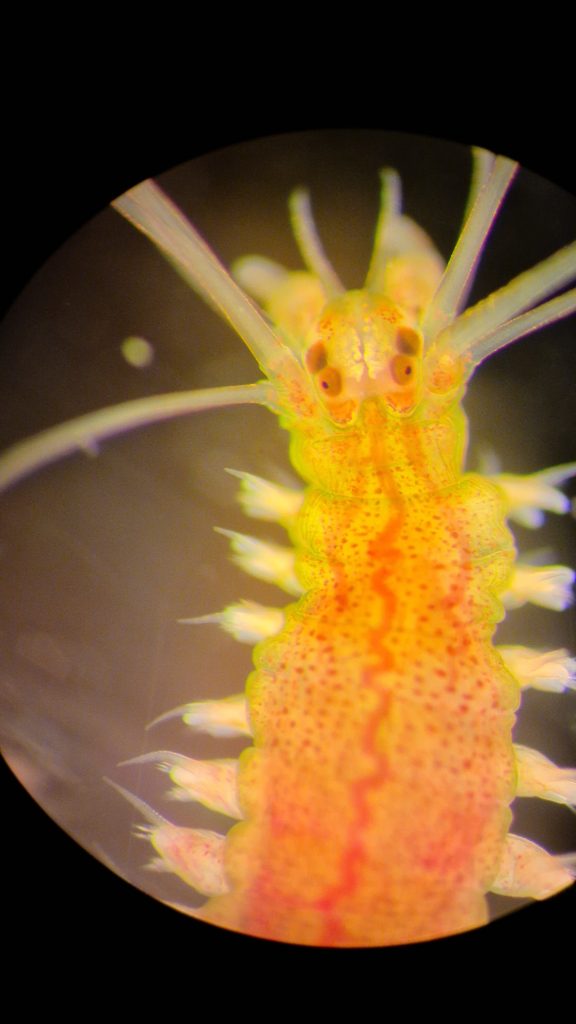
The life cycle of Platynereis dumerilii is linked closely to the lunar cycle. After emerging as larvae, the worms swim around in the sea until they grow large enough to ‘settle’. During this next stage, they build long tubes that attach to sea algae and rocks and live inside them until they mature. The final step takes place during new moon nights, when the mature individuals swim to the surface of the sea to mate and spawn the next generation.
For biologists, the fascination for Platynereis dumerilli lies in the fact that it is extremely slow evolving – it is believed to have changed little genetically and phenotypically in the last several million years. This, in turn, makes it an ideal candidate to study the evolution and emergence of the central nervous system. While it has been cultured in the lab since 1953, studying it directly in its natural environment presents many interesting opportunities.
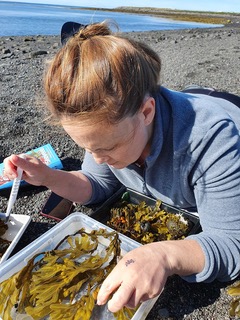
For the Arendt team, their days during the expedition started with loading equipment into a van and driving out to the predetermined coastal sites in Reykjavik and the Westfjords. Once there, expert divers retrieved clumps of algae from shallow sea floors. On the beach, Pan and Savage set up workstations with wide trays, where they spent the next few hours sorting through algae, searching for evidence of hidden tubes and worms within.
While the team found no evidence of P. dumerilii in the waters on this trip, many other invertebrate species were present. During the main TREC expedition, beginning in 2023, the team are confident to find the worms. “We plan to look at their population genetics in relation to the surrounding environmental factors, like the temperature or salinity of the seawater,” said Pan. “We would like to see whether such factors have given rise to distinct genotypes and whether the genotypes, in turn, have helped them adapt better to their surroundings.”
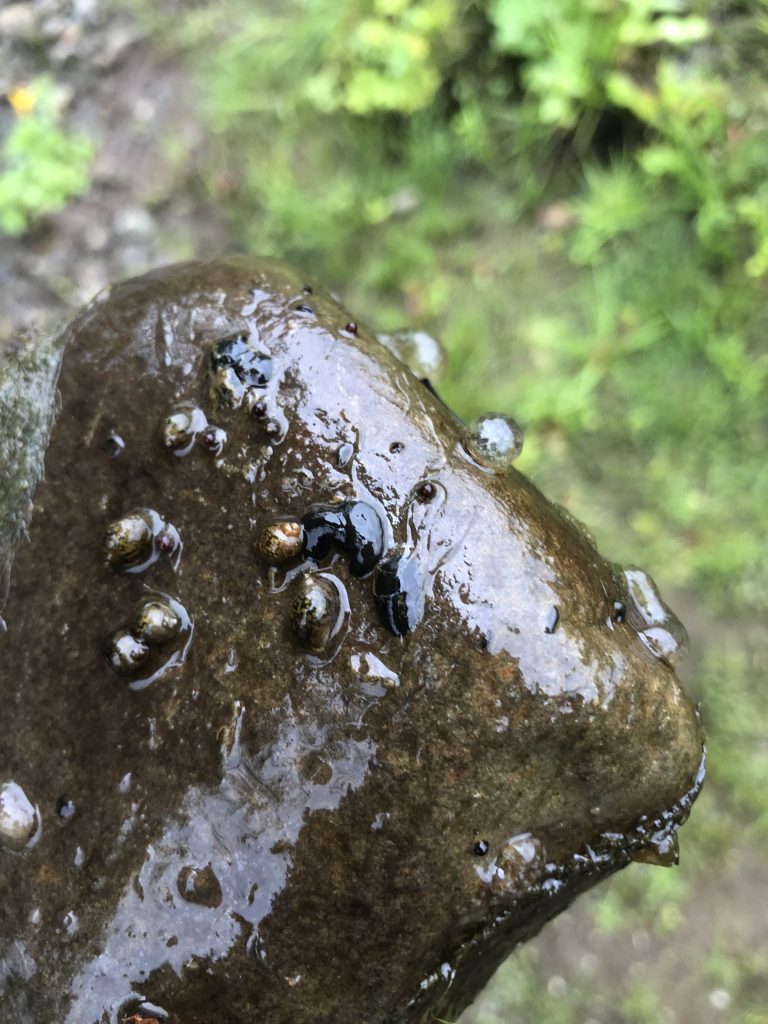
Hanh Vu, who joined EMBL Heidelberg as a group leader in 2021, is fascinated by another class of worms – planarians. Planarians are free-living flatworms that have almost unlimited regenerative capacity, and depending on the habitat and species, range in length from just a few millimetres to over a metre. Vu’s lab studies different species of planarians to figure out how and why animals regulate their body size.
Just like with Platynereis, environmental conditions, such as gradients of salinity and temperatures, affect how these worms adapt to their surroundings. This brought Vu and her team to the field and to TREC, where they headed out to coastal sites where the little planarians live among fields of seagrass and algae.
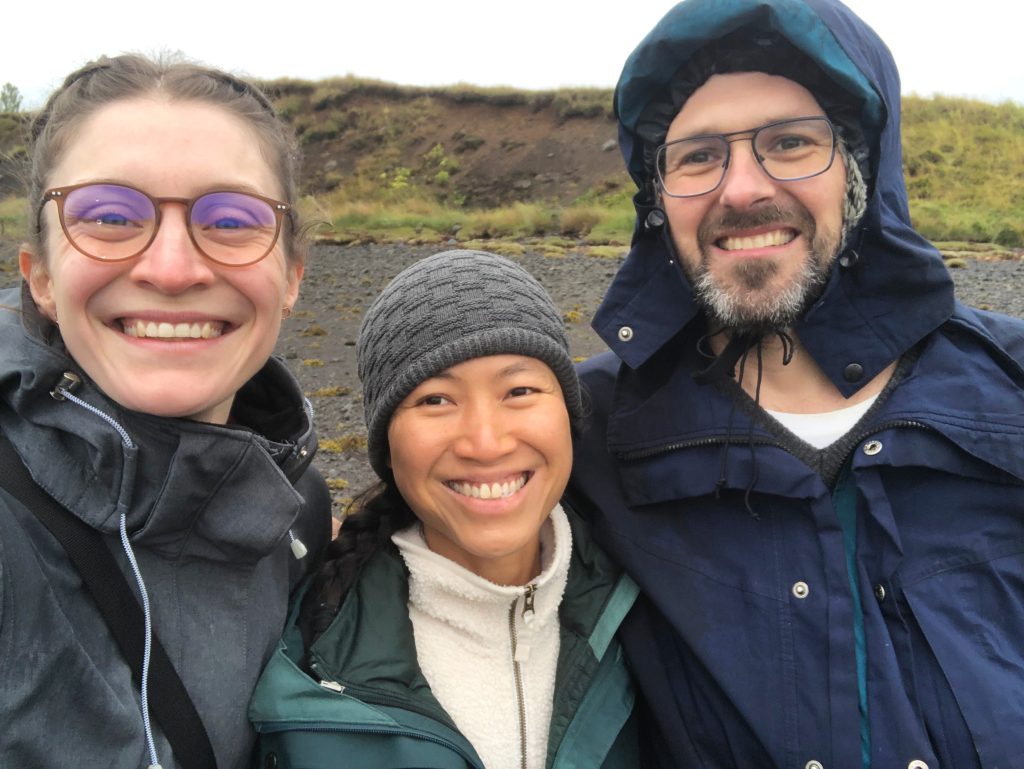
“Since marine planarians tend to stick to submerged rocks, it was important for us to catch them at the right time, when the low tide exposed these rocks,” said Vu. Once they spotted the critters, they used paint brushes to sweep them off the rocks and into the waiting collection tubes. In addition to marine planarians, the team also sampled from freshwater environments.
“There are very few previous reports of marine planarians in Iceland,” said Vu. “Unexpectedly, we found that they were actually quite abundant at the sites where we sampled. So that was a pleasant surprise.”
This visit to Iceland was the third pilot expedition in the run-up to TREC, previous editions having taken place in Villefranche, France, and Naples, Italy. Kiley Seitz, a microbial ecologist working at EMBL Heidelberg, has been part of every pilot so far. An expert in soil microbiology, she has coordinated the sampling site selection as well as the sample collection protocols. Along with other EMBL scientists, she collected soil, water, and sediment samples along ‘land-sea transects’ – straight line paths leading from the sea to adjoining lands.
For this team, the sampling process began with the now-familiar procedure of loading up a car with hundreds of pre-labelled bags and tubes and travelling to predetermined sites. Once there, the teams identified representative land-sea transects and selected sampling spots at regular distances along them, moving away from the sea.
To collect soil samples, the researchers used a ‘corer’ – a long metal tube that can be inserted into the ground at a specified depth and used to dig out a cylindrical section of soil. At each sampling spot, the researchers collected five such samples which they mixed together to form a representative picture of that position.
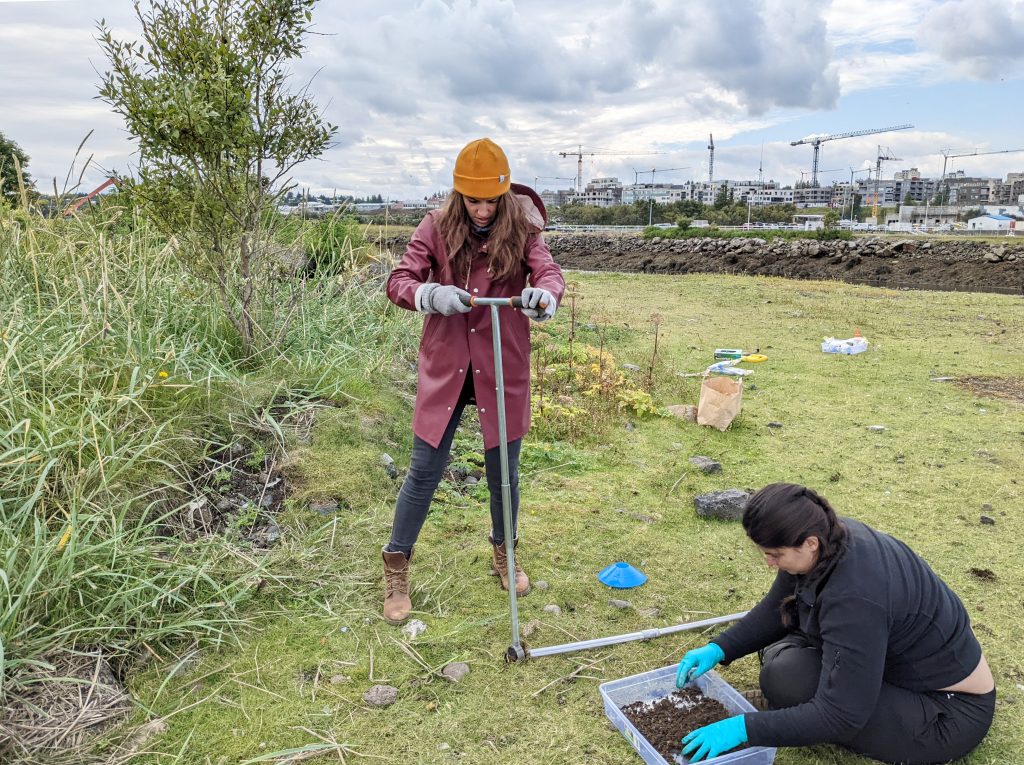
Helping collect soil and sediment samples was Richard Jacoby, who is interested in microbial species that can degrade environmental pollutants. He plans to extract pollutants (usually pesticides, pharmaceuticals, or antibiotics) from the samples back at EMBL, and analyse them chemically.
“If we start doing this in multiple places, in Iceland or throughout Europe, we can start to get a chemical profile of what pollutants are in each place,” said Jacoby. “And then perhaps we can start connecting these chemical datasets to other datasets, particularly those obtained by microbial genome sequencing.”
In Reykjavik, this team studied two sites — one of which had acted as a dumping ground for many years but had later been treated with bioremediation protocols. The other was a ‘pristine’ site, but close to a few aluminium factories. The team collected soil and sediment samples from both with plans to conduct metagenomic and biochemical studies.
In this, they were joined by Joanna Zukowska, who was also part of the plankton-collecting teams in the early days of the expedition. “I have always dreamed of working in the field,” said Zukowska. “This was a great opportunity for me to learn more about fieldwork and about marine biology.”
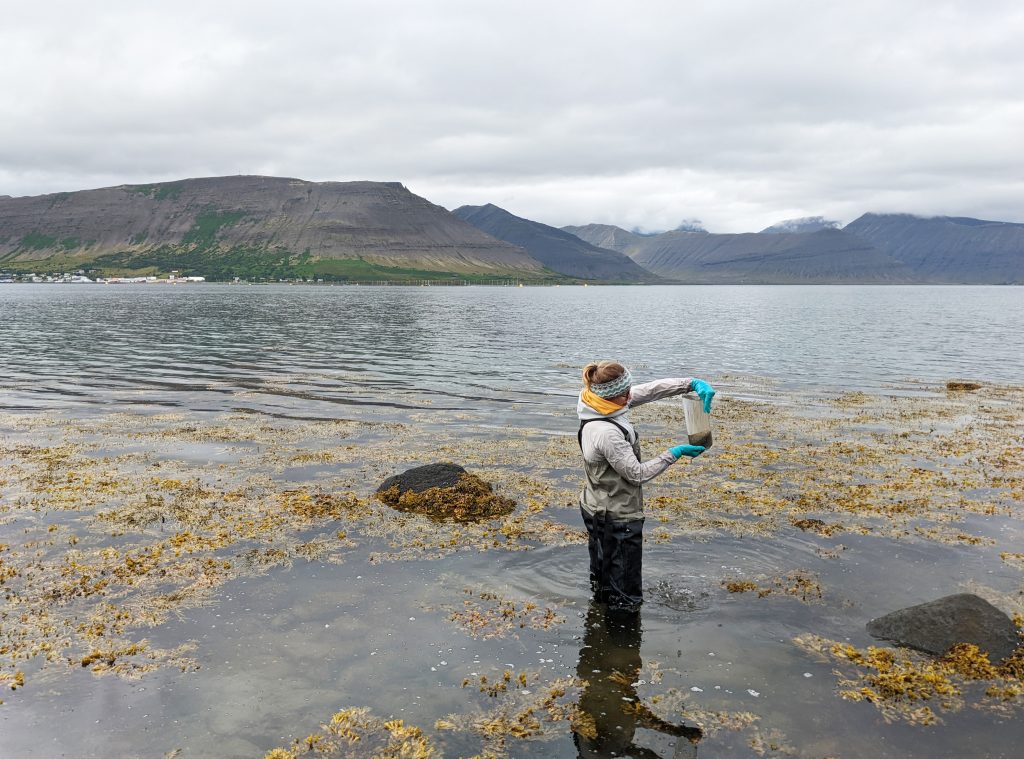
In 2017, EMBL alumnus Jacques Dubochet received the Nobel Prize for developing a way to prepare and image biological samples using cryo-electron microscopy, a technique that has made it possible for researchers to study the structure of biomolecules at an unprecedented level of detail.
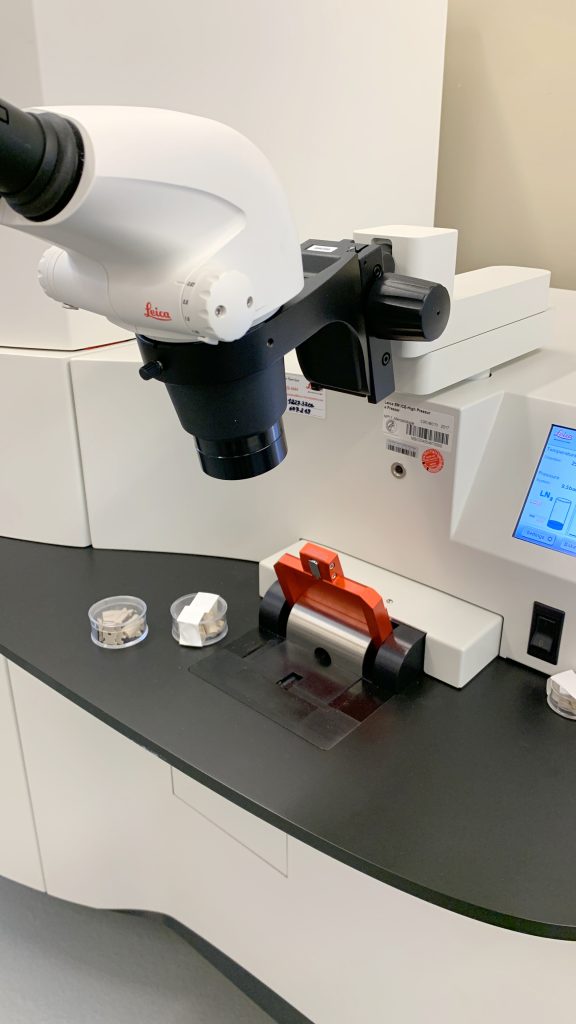
Now, researchers are bringing this technique from the lab into the field, greatly expanding the scope of the type of biological samples it can study. In addition to plankton and flatworm-collecting biologists, the Iceland pilot expedition team included electron microscopy specialists who tested out protocols for quickly freezing samples in field conditions (and posted their adventures on Twitter with the hashtag “#WeFreezeOnTheBeach”).
“It was very important for us at this stage to consolidate the protocols – how are we going to collect the samples, store them, reference them etc.,” said Yannick Schwab, Head of the Electron Microscopy Core Facility at EMBL Heidelberg.
One of the teams most interested in this process was that of Ben Engel from the University of Basel, Switzerland. The Engel group studies the cellular architecture of marine algae.
“We are trying to understand how the chloroplast harvests the energy of light to make the biochemical energy that sustains all life on Earth, and how that energy is then used for carbon fixation,” said Engel. To do this, they carry out cryo-electron tomography, a technique where thin sections of frozen cells can be imaged in 3D at high resolution to reveal their inner structures. During the Iceland expedition, the team tried out some of its sample preparation steps in the field.
“This is new. There are very few people doing cryo-electron microscopy in the field,” said Anna Steyer, cryo-ET specialist at EMBL Heidelberg. “When you think of fieldwork equipment, you think of binoculars, not of sample preparation for high-end cryo-EM. The power of this technology is opening up new questions that biologists anywhere can now address.”
The teams tested different types of freezing protocols for different applications, for example, plunge freezing for cryo-electron tomography, or high-pressure freezing for volume-electron microscopy. While for this particular expedition, required equipment was shipped beforehand to Iceland from participating institutions, eventually a truck that travels coast to coast will house the equipment needed for future fieldwork. And that’s EMBL’s mobile lab services.
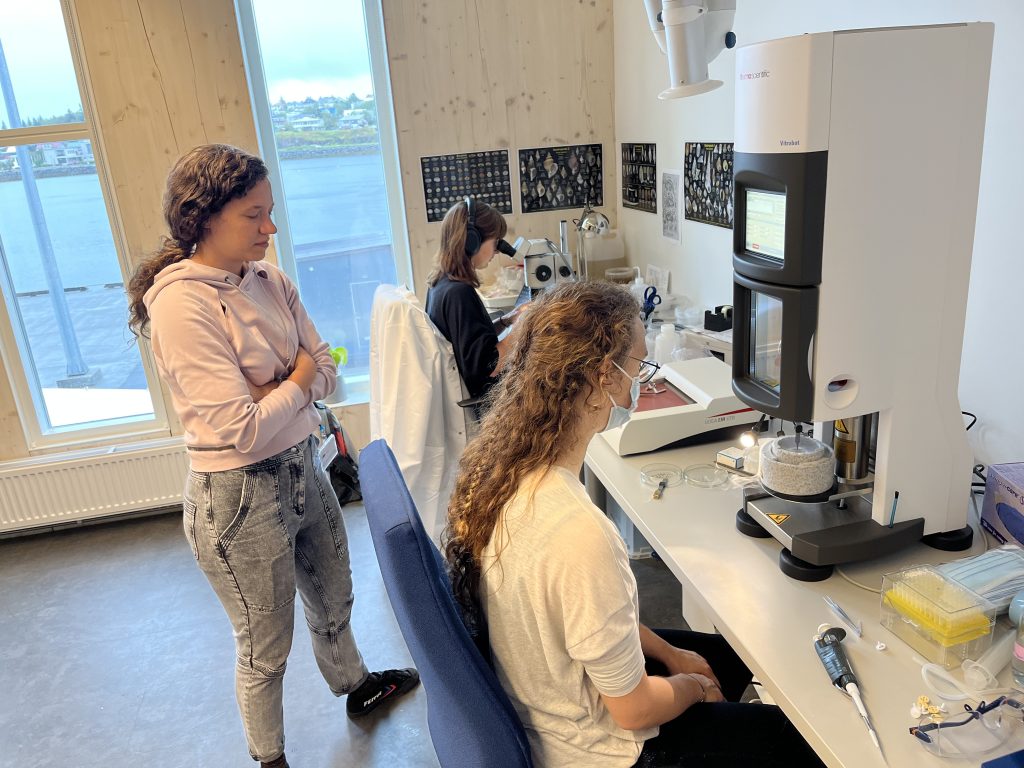
“This was an excellent dry-run for what we will be facing next year during TREC,” said Niko Leisch, Operational Manager-EMBL mobile services. “For me, it was important to see the different groups with different scientific aims in action. Observing their workflows yields important clues that would help us improve on planning for future trips.”
This expedition was many years in the making. EMBL’s new five-year programme ‘Molecules to Ecosystems’, which was launched in January 2022, laid down the ambitious goal of advancing our understanding of ecosystems at the molecular level to study life in its natural context. To help achieve this, EMBL initiated several transversal themes which support the multidisciplinary science necessary to realise projects like these. One of these themes is Planetary Biology, which aims to study, from the molecular to the population level, how microbes, plants, and animals respond to each other and to their environment.
TREC, a flagship project part of the Planetary Biology theme, aims to study coastal ecosystems across Europe and their responses to a fast-changing environment to address environmental challenges to planetary and human health. In realising this goal, EMBL’s researchers and mobile services will work closely together with the Tara Ocean Foundation, the Tara Oceans Consortium (now TaraOceanS), the European Marine Biological Resource Centre (EMBRC), as well as many other national research institutions.
“Given the scale and urgency of human and planetary health challenges, it is important for EMBL to organise this large pan-European, highly collaborative and cross-disciplinary project,” said Paola Bertucci, Scientific Expedition Manager for TREC. “EMBL is well positioned to lead this because of its intergovernmental status and large network of collaborators and partners.”
Throughout this pilot expedition, co-organised by the Icelandic biodiversity research network BIODICE, EMBL researchers and their collaborators interacted closely with their host institutes in Iceland, with whom they formed strong scientific connections and set up future collaborations. It was an opportunity to exchange scientific knowledge as well as expertise, as molecular biologists met marine scientists and ecologists.
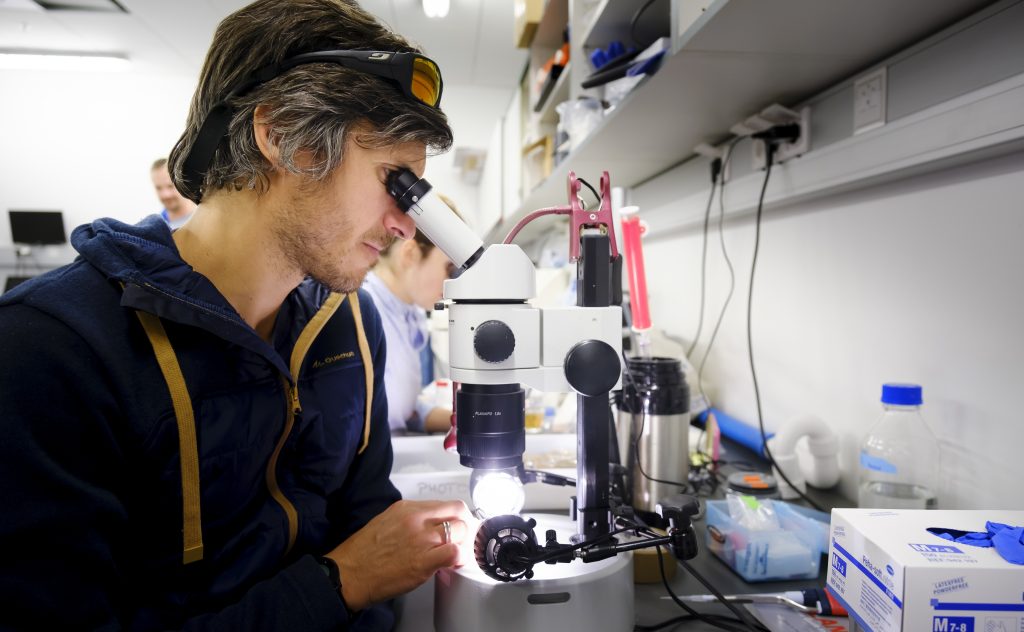
“We had a very positive reaction and a lot of interest from the Icelandic scientific community, and new collaborations were formed around our technologies and scientific questions,” said Leisch. “This aspect of giving back to the scientists in our member states is a very important one for me, and is one of the central missions of the mobile services.”
In addition to the scientific activities, the trip also included public engagement and outreach events. On a walk called “Science on the Beach”, coordinated by Sara Verstraeten, TREC Outreach & Public Engagement Manager, members of the public could engage with the expedition scientists to learn more about their work.
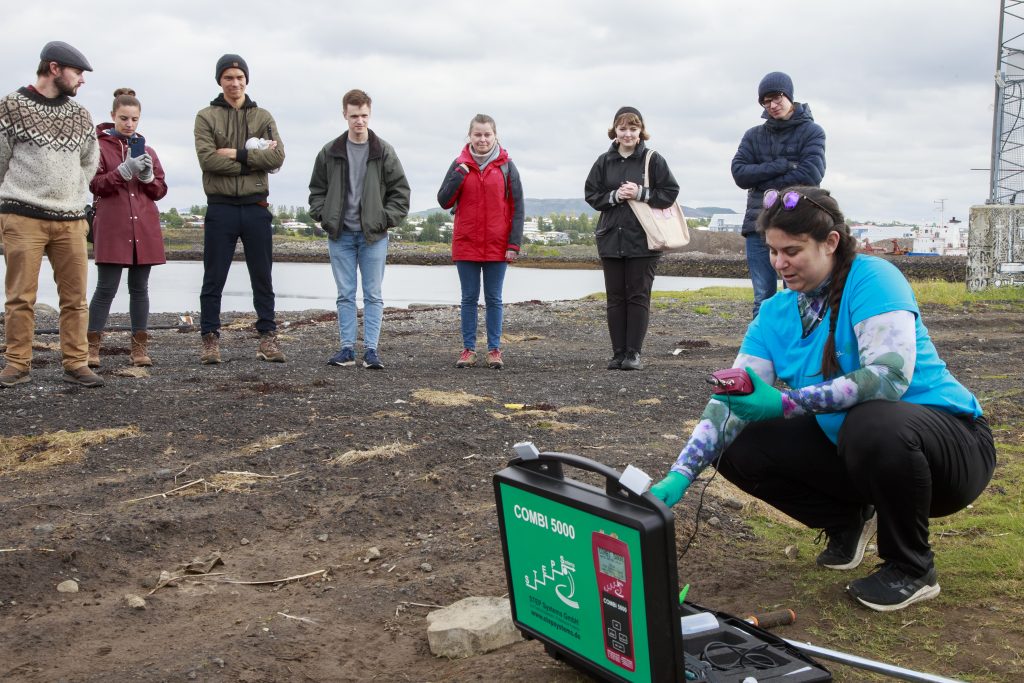
With lessons learned from Iceland, the team looks forward now to preparing for the next expeditions that will begin in France in spring 2023 and conclude in Greece nearly 18 months later.
“Iceland is always breathtaking. All day long, one is surrounded by a rather hostile, alien landscape shaped by volcanic activity,” said Leisch. “But the warmth of the Icelandic people more than makes up for that.”

EMBL research groups apply molecular biology and its research tools to better understand agricultural pesticides
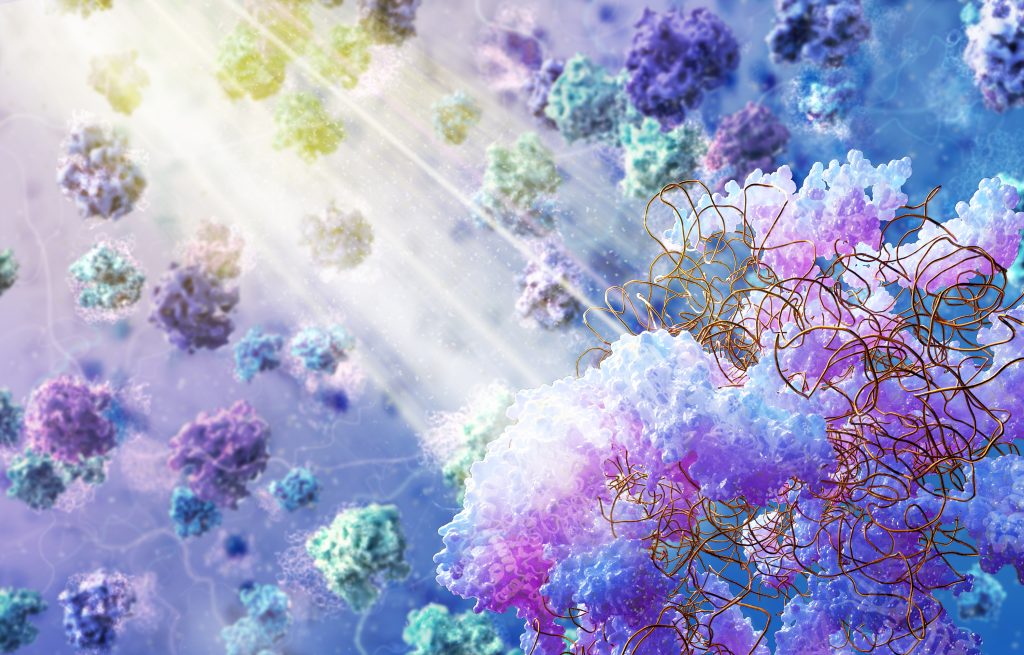
Researchers have observed the inner workings of an unusual bacteria at an unprecedented level of detail.
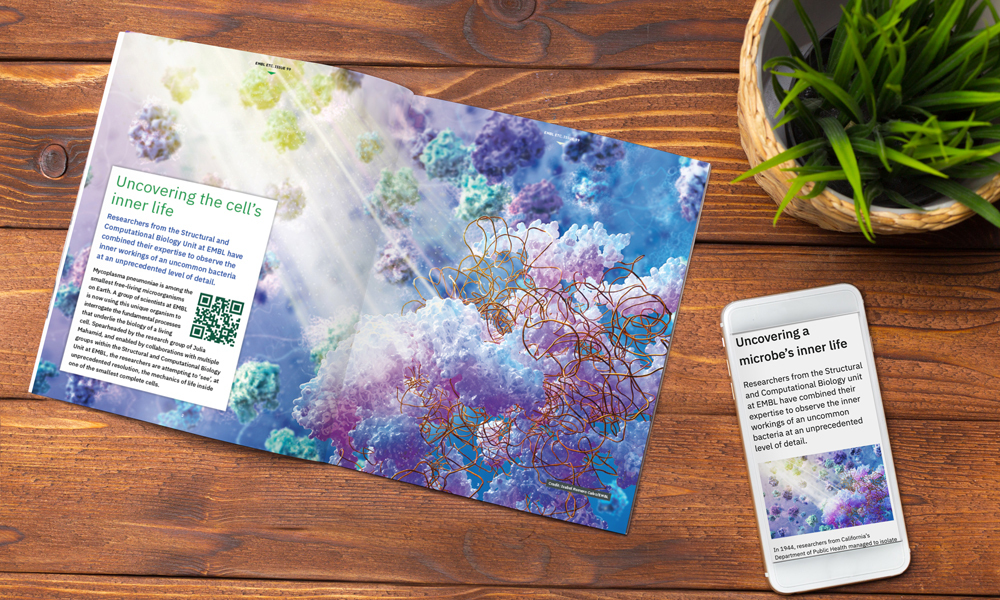
Click here to download a quick overview of all the articles included in this digital issue of EMBLetc.